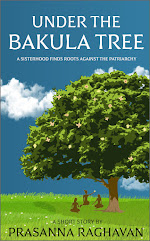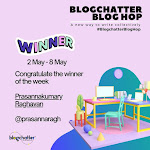HOW TO STRUCTURE A STORY AND COMPREHEND THE NARRATIVE STRUCTURE
The most crucial aspect of writing a story is structuring it. However, a writer cannot jump straight into this without comprehending the narrative structure and what it entails. Before structuring the story, the writer must consider the types of narrative structure, the character arc, the point of view and the perspectives. There is a fixed template to follow when structuring the story.
In this post, I discuss the following points:
1. What entails a narrative structure?
1.1. The five types of narrative structure.
1.2 Four factors to consider before creating a story structure.
2. How to structure a story.
2.1 Three tips to build/organise the story structure.
1. What entails the narrative structure?
A narrative structure is also known as a story structure, a plot line, or a storyline. It entails different parts a writer must grasp to organise the story structure.
1.1.What are the five types of narrative structure?
Over time, writers have developed different techniques for framing narratives or sequencing the events in a story, and they have proven helpful for other writers to follow. Here are the five most popular methods they have used.
1.1.1. Linear plot structure.
Events follow chronologically in any form of storytelling, including a novel or a short story that follows a linear plot structure. This does not mean a character cannot recall her past; flashbacking is a technique used for that. Most books, plays, TV shows and films use this structure. Dan Brown and Margaret Atwood are among the writers who use this technique greatly in their writings.
1.1.2. Non-linear plot structure.
Here, plot events are introduced outside their chronological sequence. For example, the first scene of a book in a non-chronological plot structure might be the last event that happens chronologically. It may initially sound confusing to readers, but that would be over in the previous scene, where the plot threads are tied together.
Writers like Joyce Carol Oats and William Faulkner are acclaimed authors who follow non-linear plot structures. Kurt Vonnegut's famous Slaughterhouse-Five is a famous story that follows this structure. I have yet to read any of those authors to comment on their chosen plot structure. Those who have read them will share their opinions in the comments.
1.1.3. Parallel plot structure
In this, multiple plotlines emerge concurrently, intersecting one another as in Charle's Dicken's A Tale of Two Cities or not as in Nathaniel Rich's The Mayor's Tongue.
1.1.4. Cicrulat plot structure.
In this structure, the story ends where it begins. Events in the story lead back to the event, scene, or imagery the story started with. Examples are Cynthia Rylant's Lost Night Moon, Stone Steinbeck's Of Mice and Men, and S. E. Hinton's Outsiders.
1.1.5. Interactive plot structure.
In this case, the story adjusts to the whims of the readers.
1.2 Four factors to consider when creating the story structure.
There are four questions a writer generally asks and finds answers to before they settle on a plot structure.
They are:
1.2.1. What is the protagonist's character arc?
Consider what changes you want your protagonist to undergo and what events in the series make that change possible. Readers care foremost about character development, so this element needs to be strong before you decide how your story will be told.
1.2.2. The point of view.
Is the narrative in the first, second, or third person? Third-person omniscience gives authors more flexibility for circular, parallel, and non-linear narrative structures, whereas a first-person narrative works well with linear structures.
1.2.3. What are the major events in the story?
Using the story structure imagery shown here, you can decide the major events in the story. Decide what the starting point is, the inciting incident, the rising action, the climax, the falling action, and the final resolution.
Each of these parts of the narrative acts as a touch points that anchor your story.
1.2.4. How many perspectives are featured?
Sometimes, authors use multiple points of view in their stories to bring out different characters' perspectives. Events happening in the story through the eyes of different characters present a myriad tapestry of them to engage the readers.
William Falknar has used this in his novel As I Lay Dying, which follows a non-linear structure. I haven't read that. I have recently read two novels, The Surgeon by Leslie Wolfe and The Daughters of Madurai by Rajasree Variyar; in both, the authors use this type of narrative structure, which I found engaging.
2. How to structure a story?
2.1 Three tips to consider when you organise your story structure.
Once you have considered answers to the above questions about the type of narrative structure, the character arc, the event series, subplots, etc., you can look at how to build the narrative structure or the story structure following a fixed template.
2.1.1. Fixed story template.
There are different ways to organise your narrative structure. The most popular is the three-act structure. I have found the following most expressive template of a three-act structure.
This diagram shows the steps in a three-act structure. The same is shown in the steps below.
- Act 1: the setup.
- Exposition
- Inciting incident
- Plot point 1
- Act 2: Confrontation.
- Rising Action
- Midpoint
- Plot Point 2
- Act 3: Resolution.
- Pre-climax
- Climax
- Denouement
A plot point is different from a plot. Plot points are key moments relating to the protagonist and their actions in their journey. A plot, on the other hand, is a series of events that constitute the story following the laws of cause and effect.
2.1.2. Map our character information.
What do you want your readers to know about your protagonist/ characters.
- Map out their peculiar traits
- Their backstories.
2.1.3. Pay attention to loose ends.
You must avoid leaving a trail of dangling narrative threads as you proceed with your story. If you raise a question in readers' minds, you answer it.
Your readers may not like your story, but you should give them the impression that you have a clear grip on the characters you introduce in your story and the plotlines you create.
To read more on this, visit here.
Conclusion:
I consider understanding the narrative structure and organising the story structure to be the most significant parts of writing a story. I have spent hours reading the topics and summarising them in this form. I hope you enjoy reading it.
This post is part of the Bookish League Blog hop hosted by Bohemian Bibliophile.
This blog post is part of the blog challenge ‘Blogaberry Dazzle’ hosted by Cindy D’Silva and Noor Anand Chawla in collaboration with Growing with Nemit.









56 comments
Some narratives are complex yet interesting. I have never studied the technicalities of storytelling, but I get lost with non-linear plots where too many things happen at the same time in the same chapter. That's a good link you have shared for understanding the three-act structure.
ReplyDeleteNarrative structure can have a big impact on the reader's experience, as it can shape how the reader perceives and understands the story.
ReplyDeleteFor example, a linear narrative structure, in which events are presented in chronological order, can create a sense of predictability and familiarity for the reader.
Yeah, in story writing, the readers are the kings and undoubtedly, the writers' business is to grab their interest, for which the narrative structure is crucial.
DeleteYeah some books are just so badly written. I don't know if the author even bothers reading their own story again. But there are many new authors who write wonderfully and probably follow the above rules.
ReplyDeleteI m not a writer but your post it helpful for all those writers out there.
ReplyDeleteThank you for the appreciation.
DeleteYour posts always hold my attention because there was a time, I believed that writing cannot be learnt but now I have come to understand that it is something you can learn to a decent level, the art of writing a story , developing characters etc.I look forward to learning more about structuring and writing short stories.
ReplyDeleteYou put it correctly about peoples' perception at a time when writing was inborn and couldn't be acquired through training. Writing is an acquired talent that can be perfected through mastering the techniques, is the present view, and works well.
DeleteAnother informative post! I really like the way in which you've condensed this information to be useful to writers. Kudos!
ReplyDeleteThank you :)
DeleteThis is a well-rounded guide that not only educates but also inspires writers to think critically about the structure of their stories to enhance their narrative's impact and clarity. Excellent work!
ReplyDeleteThank you for sharing your view. Understnding the narrative structure and its use are two premium factors in story writing.
DeleteA very important post which I believe every young and old authors should go through if they actually master the art of storytelling. Thank you so much for this outstanding post
ReplyDeleteThank you, and this is my humble offer to those who dream about writing and publishing.
ReplyDeleteFixed template is a hit and miss for me, which is why I try to veer away from it in most of my stories, because it also keeps with the predictability factor which I don't enjoy as a reader myself. This a great guide for new authors and even otherwise.
ReplyDeleteI believe authors can deviate from the fixed template if they do not find comfort.
DeleteWow, what an in-depth exploration of narrative structure! You've covered so much ground, from the different types of narrative structures to the key factors to consider when crafting a story. The three-act structure diagram you included is a fantastic visual aid, and your explanation of each step makes it easy to understand how to apply this template to one's own writing. Mapping out character information and paying attention to loose ends are also essential tips that writers can benefit from.
ReplyDeleteThank you, I feel honoured when reading such comments.
DeleteI really appreciate the way you simplify the details in a simplified manner for all non writers to understand the technicalities of writing. Really well penned and informative post.
ReplyDeleteI am happy the time I spend on the post does not go to waste. Thank you.
DeleteI am happy the time I spend on the post does not go to waste. Thank you.
DeleteThe structure of the narrative determines how intriguing the book can be. Some will make you not close the book some will make you irritated when there is no proper structure . This is an insightful read
ReplyDeleteThat is a superb observation. Thank you.
DeleteThis is a helpful series - for anyone wanting to write i think it is important to know and use this narrative structure. books without structure lend to a poor read.
ReplyDeleteIndeed, understanding the narrative structure is key to writing a good book.
DeleteIndeed, understanding the narrative structure is key to writing a good book.
DeleteAlways learning something new from your posts. I am not a writer but love reading about the art of writing. These technicalities go a long way.
ReplyDeleteThank you, Ritu, for your perspective on the post and for taking something new from it.
ReplyDeleteWhether or not I will ever write a successful story I do not know , but I find this post about how to create an engaging narrative quite interesting.
ReplyDeleteHi, Preeti; that is the purpose behind the research and the writing I put into this post. Thank you. :)
DeleteWhether or not I will ever write a successful story I do not know , but I find this post about how to create an engaging narrative quite interesting.
ReplyDeleteQuite detailed information about narrative structure and how to write a short story . I loved the technicality you have described here, I might practice a little more to adapt to the process. Thanks for such a detailed article.
ReplyDeleteThank you for the appreciation and the promise to make use of it.
DeleteAs a writer, I am bookmarking this post as find the tips very helpful and good in leading my thought process when actually sitting down and creating a story. I think people forget, just like everything else, writing is a science as well as an art, and there are things we can do to improve at it
ReplyDeleteHi, Meetali; thank you for bookmarking it for future use. Your observation is correct that fiction writing has evolved into a science with technical perfections while keeping its creative status.
DeleteWell, I have been thinking a lot about the structure of storytelling lately. I was researching on it while writing a short story for a competition. I love how interactive plots put the power in the reader's hands, making each reading experience unique and exciting.
ReplyDeleteHi, Felicia. I hope the post will help you with the story-writing structure.
DeleteThis is very educative Prasanna. It helps both a novice and a story-teller too. An art to keep revisiting.
ReplyDeleteHi, Chandrika; thank you for your words of inspiration. :)
DeleteUseful tips and an informative article! Kudos for writing this. Not everyone wants to share knowledge! Thank you!
ReplyDeleteHi, Ranta, thank you. Yes, those afraid of others gaining knowledge keep it a secret.
DeleteI am yet to establish myself as a fictional writer. Non fiction, I am able to. Therefore your tips are really helpful for me.
ReplyDeleteThank you. I ventured into fiction writing at a later stage in my life. So, I got to research serioulsy into its various aspects.
DeleteThis is very informative. I am a different kind of writer but I surely did learn something new today.
ReplyDeleteThat is exciting to learn that you got some learning from my post. Thank you.
DeleteWow, this article holds so much information about how can a short story be structured. There's a lot to learn from here!
ReplyDeleteHi, your comment truly motivates me to do more on it.
DeleteGreat post! You've made it clear how important narrative structure is, and how understanding it is key for writers. I really like how you break things down for non-writers to understand. Well-written and informative.
ReplyDelete-Anjali
Thank you for the deep analysis of my post and its highlights.
DeleteI find this to be informational and interesting -there are so many parts to creating a narrative and such a structured approach can really bring depth to a good story.
ReplyDeleteThank you. The post I made to help those who want to delve into the story structures as writers.
DeleteInteresting and I formative post Prasanna. Although I write, I had never delved into the technicalities of writing. It does seem like a science altogether. I believe that if you are theoretically sound in something it increases your hold in it by a whole lot and your perception about the subject changes too.
ReplyDeleteThank you for this informative post. Honestly, it's been so long since I took a writing course, so this was such a good refresher for when I write up my stories on my blog.
ReplyDeleteI love writing and reading stories but haven't paid attention to the detailed structure before. Circular plots are interesting, I feel. They give us a start and end point and allow us to develop our character graph easily.
ReplyDeletePrasanna, this post is an absolute gem for budding writers! Your step-by-step guide on structuring a short story is so practical and easy to follow.
ReplyDeleteValuable lessons. I had learnt all this in a creative writing course I took a few years ago.
ReplyDeleteNoor Anand Chawla
Post a Comment